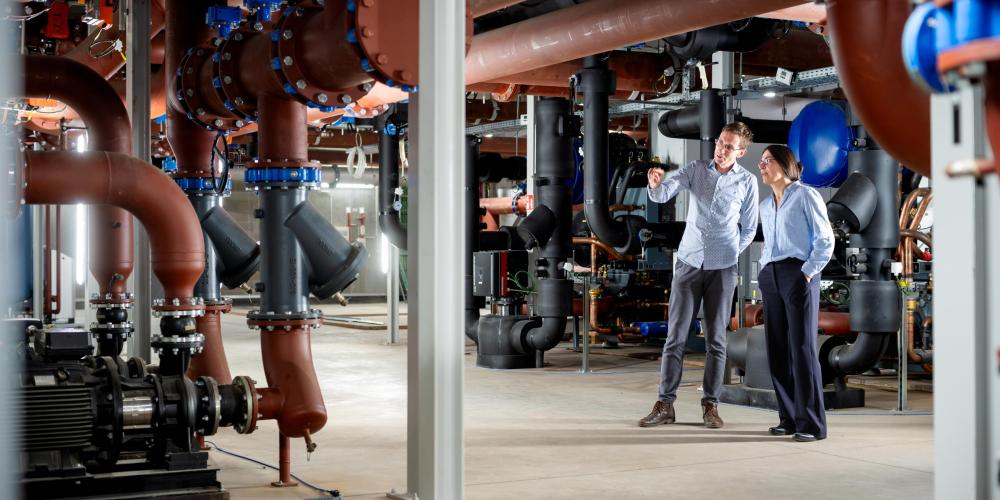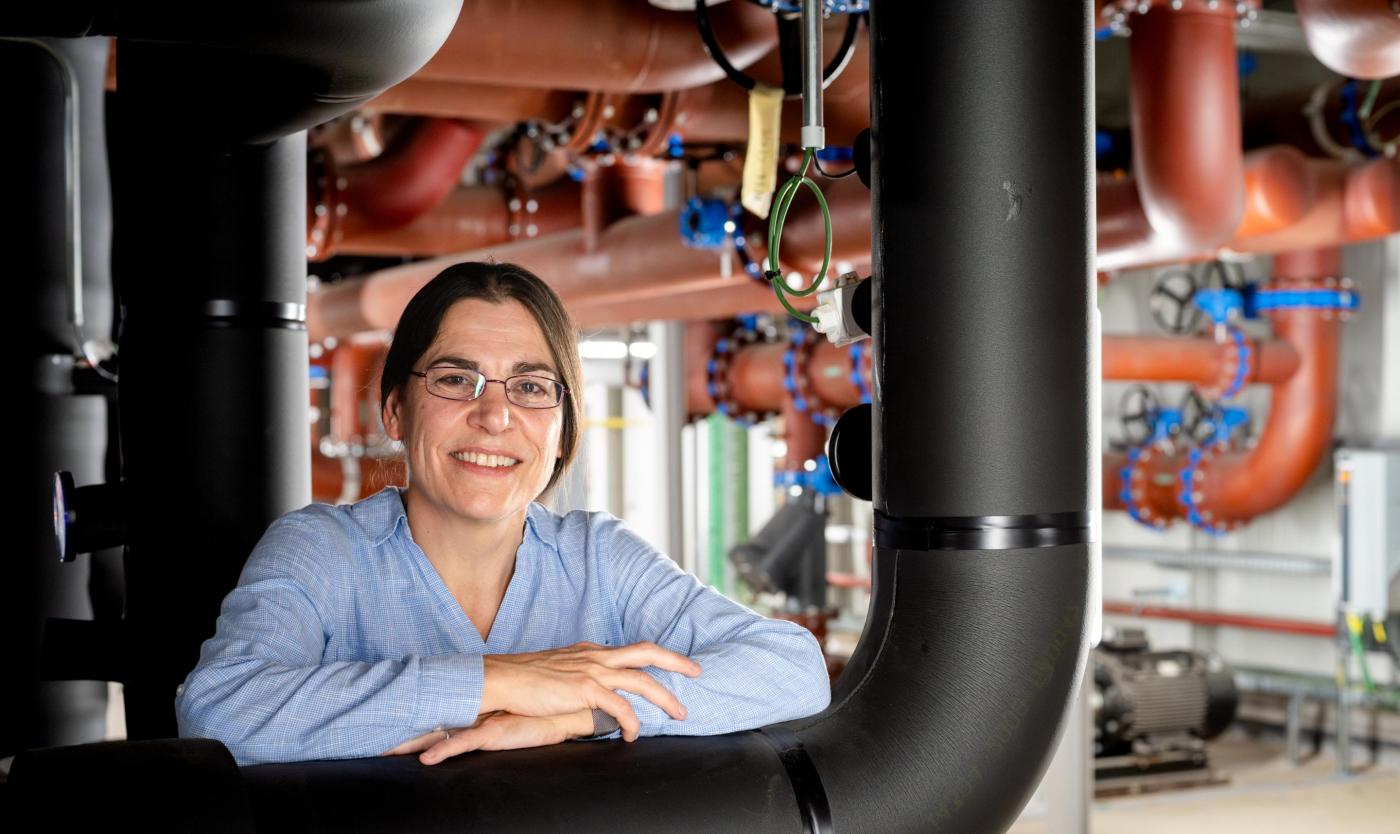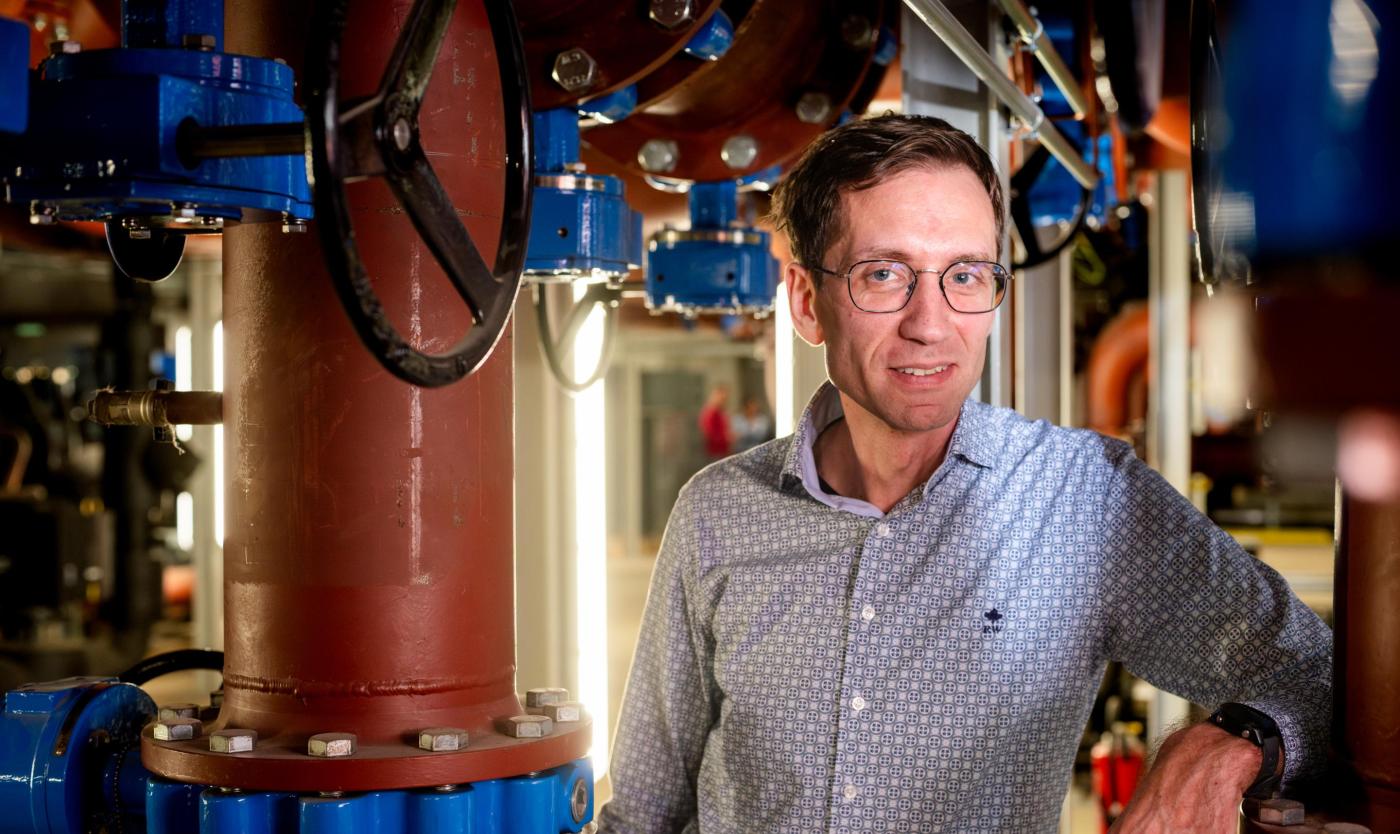
On 27 November, the latest Flemish VSC Tier-1 supercomputer was unveiled at the Nexus data centre in Zellik. For the first time, VUB will take on its management in the coming years. Karin Voets, VUB Chief Information Officer, and Ward Poelmans, Head of Scientific Data & Compute, proudly explain what this brand-new system can do.
What exactly is a supercomputer?
Karin Voets: “Essentially, it’s a cluster of computing power. But the benchmark for what qualifies as a supercomputer is constantly shifting; what was considered one yesterday often isn’t today. To give you an idea: a modern smartphone has more computing power than a supercomputer from the 1980s.”
Ward Poelmans: “You could see a supercomputer as a collection of different computers connected via an ultra-fast internal network, working together. That makes it vastly more powerful than a laptop.”

Karin Voets
This isn’t just any supercomputer, but a Tier-1 supercomputer – what does that mean?
Voets: “It’s mainly about access. Almost all universities have their own Tier-2 supercomputer, which they manage themselves. All researchers at such an institution – even master’s students – can use it if needed. To access a Tier-1, you must submit an application and have it approved. There’s also a Tier-0 level, operating at European scale: currently the LUMI supercomputer in Kajaani, Finland. Access there is reserved for countries co-financing the project, including Belgium.”
This isn’t the first Tier-1 supercomputer in Flanders, but it’s the first time VUB will manage one. How did that come about?
Voets: “Because technology evolves so quickly, a new supercomputer must be purchased every few years. After a certain time, older systems become economically unviable due to high energy consumption compared to delivered performance. Every six years, a new system is funded, and universities can apply to build and host it. In the past, Ghent and Leuven were awarded the contract, but this time VUB was selected.”
How did VUB succeed?
Voets: “We submitted a strong proposal, with a key asset being the environment where the new supercomputer is housed: the Nexus data centre at VUB’s Research Park Zellik. This state-of-the-art facility is ideally equipped for a modern supercomputer. Today’s generation includes far more GPUs – graphic processing units – originally designed for gaming but now crucial for AI workloads. GPUs consume enormous amounts of electricity and require advanced cooling. Simply circulating cool air and expelling warm air – standard in data centres – no longer suffices. Liquid cooling is essential, demanding a completely new infrastructure. Our data centre was purpose-built for this, which proved a major advantage.”
What scientific purposes most often require Tier-1 computing power?
Poelmans: “Traditionally, chemical reaction simulations, which involve vast numbers of calculations, but also physics and astrophysics research. Supercomputers are vital for climate modelling: only they can generate models quickly enough to predict the impact of behaviour or measures on future climate. In engineering, it’s mainly computational fluid dynamics – simulations of liquids and gases, such as airflow over aircraft wings, ship movement through water, or fuel injection in an engine cylinder. And now AI is everywhere, even in the humanities, for analysing massive text datasets.”

Ward Poelmans
Voets: “The supercomputer won’t run services or applications, but it will develop models leading to innovation – from AI models detecting defects in steel cables to hydrological and weather simulations predicting flood risks. Companies have already seen simulations run up to ten times faster.”
What was the cost?
Voets: “The Flemish government allocated €8.6 million, with a planned €3 million expansion in 2027. Upgrades are also budgeted to avoid premature obsolescence.”
"Besides Flemish universities, Tier-1 is available to industry for R&D and innovation"
Supercomputers and data centres are notorious for high energy use – is that still acceptable in times of climate change?
Voets: “Sustainability was central from the outset. We translated this into four pillars. First, the supercomputer itself: sustainability was decisive in awarding the contract, which NEC won by offering the highest computing power for the lowest energy consumption.
Second, the housing – our data centre. Its Power Usage Effectiveness (PUE) is around 1.2, meaning that for every kilowatt of IT load, only 0.2 kilowatt is needed for cooling and infrastructure. It’s among Belgium’s most energy-efficient data centres.
Third, we aim for maximum utilisation: besides Flemish universities, Tier-1 is available to industry for R&D and innovation. We target 80% occupancy, leaving a small margin to avoid long queues. Finally, users must play their part: we’ll provide insight into the energy use of their jobs, challenging them to write energy-efficient code – a new domain called green coding.”
Finally: the supercomputer was named Sofia – Greek for ‘wisdom’. Is that why?
Poelmans: “Indeed, but we also see it as a beacon guiding us to truth, reflecting VUB’s core values. Knowledge belongs in the light, freely accessible and shared to advance humanity. Hence the large sun depicted on the cabinets.”
Construction of the supercomputer

